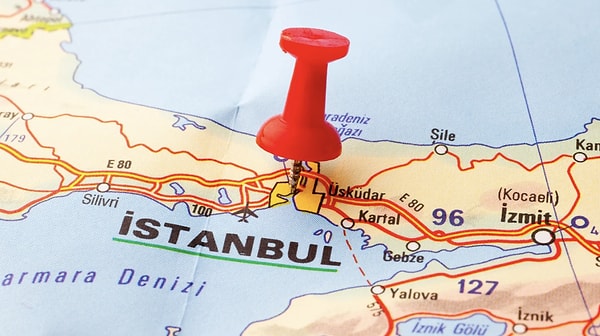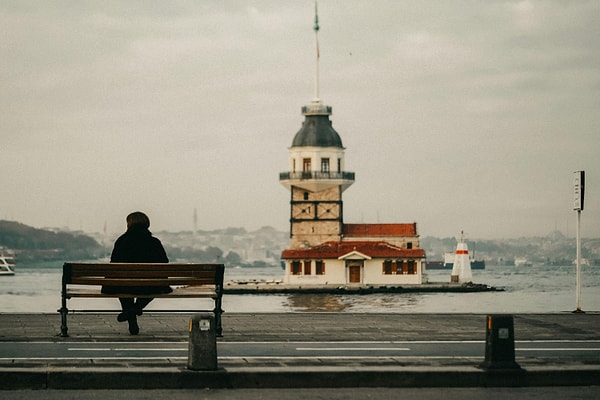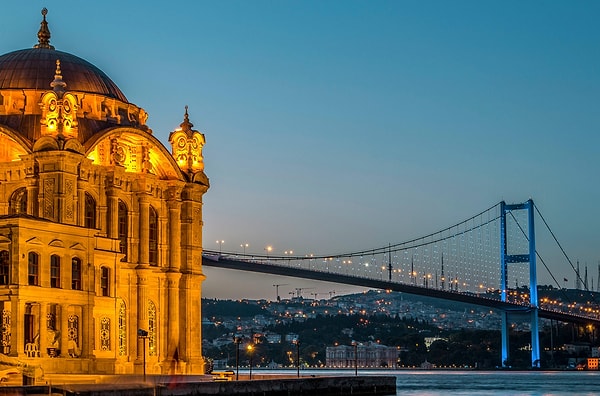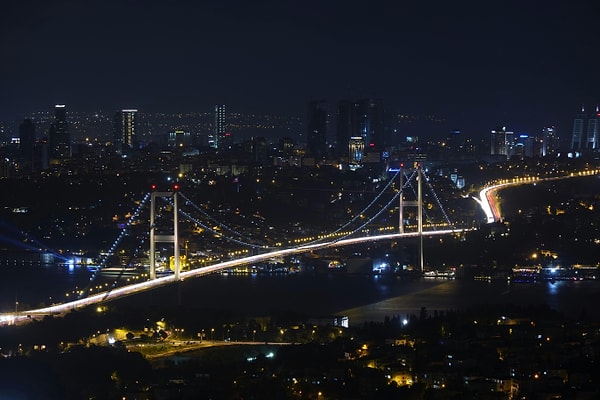Is Istanbul in Europe or Asia? Understanding the City's Unique Location
‘Is Istanbul in Europe or Asia?’ is a seemingly simple question with deep historical and geographical contexts that is frequently explored by both residents of Turkey and curious travellers around the world. Istanbul is one of the most remarkable cities not only in Turkey but also in the world because it has a unique characteristic: Istanbul is located on both the European continent and the Asian continent.
In this article, we will analyse in detail Istanbul's continental location, its historical development, geopolitical importance and geographical distribution within the city. So, is Istanbul in Europe or Asia? Let's explore together!
Geographical Location of Istanbul: Europe or Asia?

Istanbul is located in northwestern Turkey, within the Marmara Region. The city is a settlement bordering the Black Sea to the north and the Sea of Marmara to the south. Undoubtedly, the Bosphorus is the most important geographical feature of Istanbul between these two seas.
The Bosphorus is a natural waterway that connects the Black Sea to the Sea of Marmara and at the same time forms the geographical border between the continents of Europe and Asia. In this context, the city of Istanbul is spread on both sides of this strait. In other words, part of Istanbul is located on the European continent and the other part on the Asian continent.
The area to the west of the strait is called the ‘European Side’, while the area to the east is known as the ‘Asian Side’. This distinction is not only geographical, but also cultural, economic and demographic.
European Side The Heart and Historical Centre of the City

The European Side of Istanbul has been the centre of the city throughout history. Known as Byzantion in ancient times, then Nova Roma during the Roman period and finally Constantinople during the Byzantine Empire, this region is the historical core of the city.
Important centres located on this side today:
Fatih (Historical Peninsula): World heritages such as Hagia Sophia, Topkapi Palace, Blue Mosque, and Grand Bazaar are located here.
Beyoglu: Cultural centres such as Taksim, Galata, and Istiklal Street are on the European side.
Populous districts such as Şişli, Beşiktaş, Bakırköy, Zeytinburnu constitute an important part of Istanbul's financial, commercial and touristic activities.
In terms of population, the European Side is also leading. According to 2024 data, the total population of Istanbul is over 16 million, and approximately 65 per cent of this population lives on the European Side. This density indicates that this part of the city is more developed in terms of both settlement and economy.
Asian Side The Modern Face of the East

Although historically quieter and less built-up, the Asian or Anatolian side of Istanbul has undergone a major transformation in the last 50 years. In particular, centres such as Kadıköy, Üsküdar and Ataşehir have become very vibrant both culturally and commercially.
Districts that attract attention on the Asian Side:
Kadıköy: It is a centre where Istanbul's intellectual and young population is dense and where cultural activities and alternative lifestyles flourish.
Üsküdar: It attracts attention with its examples of Ottoman architecture and traditional structure.
Ataşehir: As a location where financial centres have shifted in recent years, it is home to the Istanbul Finance Centre.
The Asian Side is home to approximately 35% of Istanbul's population. This ratio also shows the city's potential to grow towards the east.
Transport Between Continents: Istanbul's Unique Infrastructure

Istanbul has many transport infrastructures connecting the continents of Europe and Asia. These crossings are an integral part of the city's daily life.
Bosphorus Bridges
15 July Martyrs Bridge (first Bosphorus Bridge, 1973)
Fatih Sultan Mehmet Bridge (1988)
Yavuz Sultan Selim Bridge (2016, third bridge)
Marmaray: It is a railway line passing under the sea from the European Side to the Asian Side.
Eurasia Tunnel: It is a road tunnel that provides an intercontinental passage for automobiles.
Thanks to this infrastructure, millions of people in Istanbul are transported between the two continents every day. Thus, although the city is geographically divided, it functions as a functionally united metropolis.
Why is the question ‘Is Istanbul in Europe or Asia?’ not correct?

The false assumption that this question harbours is the idea that Istanbul should belong to a single continent. However, the most fundamental characteristic of Istanbul is precisely this continental dual structure.
Istanbul is the only megacity in the world to be located on both the European and Asian continents. Although some sources claim that Moscow, the capital of Russia, also extends to Asia, Moscow is located only on the European continent within the city limits. However, Istanbul is de facto and administratively located on both continents. With this feature, Istanbul is a geopolitical centre that attracts the attention of not only Turkey but also the whole world.
So, Is Istanbul in Europe or Asia?

The most accurate, scientific and up-to-date answer to this question is the following:
Istanbul is a transcontinental (bicontinental) city located on both the European and Asian continents.
The majority of the population is on the European side.
However, a significant part also lives on the Asian side.
The city is spread over two continents along the Bosphorus.
There are different cultural, socio-economic and historical structures on both sides.
This continental characteristic of Istanbul makes it a unique city in the eyes of not only Turkey but also the whole world.
Keşfet ile ziyaret ettiğin tüm kategorileri tek akışta gör!

Send Comment